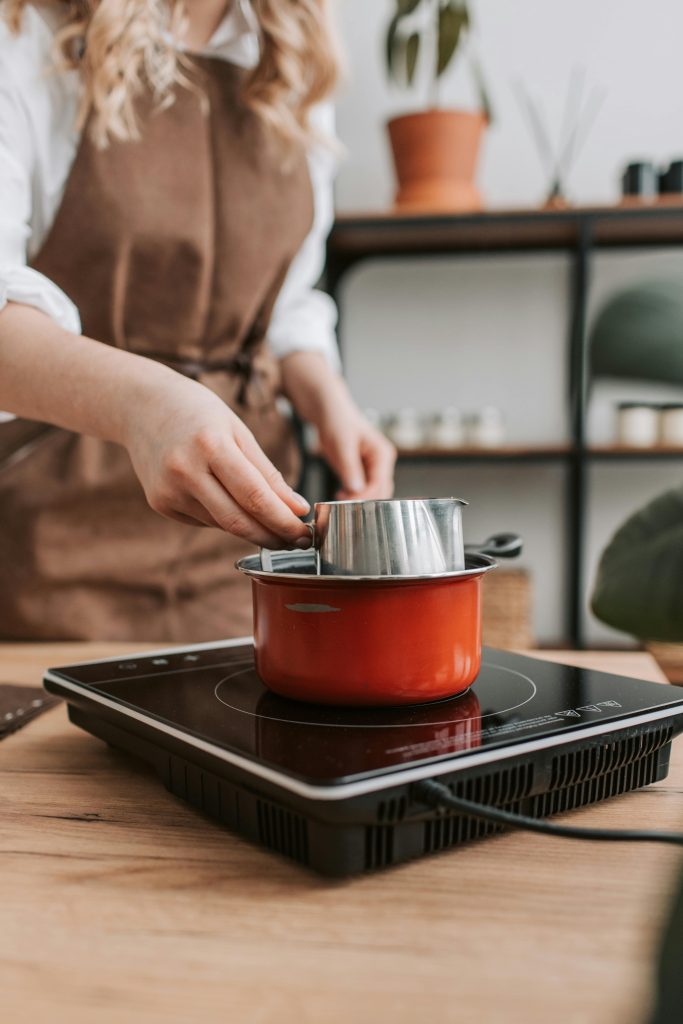
Can You Use Cast Iron on an Induction Cooktop?
If you’ve recently upgraded to an induction cooktop, congratulations—you’ve made a smart and modern choice. Induction stoves are not only energy-efficient and sleek in design, but they also offer quicker, safer, and more precise cooking than traditional gas or electric stoves. But if you’re like many home cooks, you might be wondering: Can I use my old cast iron pans on my new induction cooktop?
The short answer: Yes, cast iron works beautifully with induction cooktops. But there are a few things you should know to get the best results and avoid damaging your cooktop.
Why Cookware Matters with Induction Stoves
Unlike gas or electric stoves that heat the burner and then the pan, induction cooktops work through magnetic induction. They generate heat directly in the pan using electromagnetic fields, which means the pan itself becomes the heat source. Because of this, only magnetic cookware will work on an induction surface.
How do you know if your cookware is induction compatible? It’s easy:
Take a small magnet and place it on the bottom of your pan.
- If it sticks firmly, it’s induction-ready.
- If it doesn’t, the cookware won’t heat properly.
Materials like glass, copper, and aluminum won’t work unless they have a magnetic base specifically designed for induction.
Is Cast Iron Compatible with Induction?
Absolutely. Cast iron is one of the best cookware materials for induction cooking. It has a naturally magnetic base, which makes it perfectly compatible with your induction stove.
Here’s why cast iron and induction make a great team:
- Excellent heat retention: Once it’s hot, it stays hot.
- Even heating: Ideal for searing, frying, and simmering.
- Naturally magnetic: No special bottom coating required.
However, there are a couple of things to keep in mind…
Tips for Using Cast Iron on an Induction Cooktop
1. Handle with Care
Induction cooktops have a glass-ceramic surface, which can crack if you slam heavy pots down. Cast iron is notoriously heavy, so place it gently.
2. Avoid Sliding
Dragging cast iron across the glass surface can cause scratches. Always lift when moving pans.
3. Use Flat-Bottom Pans
Some vintage or hand-forged cast iron pans have slightly rounded bottoms. For full contact with the induction surface (and even heating), a flat bottom is best.
4. Preheating Takes Practice
Because cast iron retains heat so well, you may find it heats faster and hotter on induction than you’re used to. Start at a lower setting and adjust gradually.
Benefits of Using Cast Iron on Induction
- 🔥 Superior heat control
Induction heat adjusts instantly, perfect for sensitive recipes. - 🛠️ Durability
Cast iron can last a lifetime, making it ideal for regular induction use. - 💰 Cost-effective
No need to replace your old cookware—your seasoned skillet still works like a charm.
FAQs: Cast Iron & Induction Cooktops
Can I use enameled cast iron on induction?
Yes, enameled cast iron (like Le Creuset or Staub) works wonderfully with induction as long as the base is magnetic. Just check with a magnet to be sure.
Will cast iron damage my induction cooktop?
It can—if mishandled. Avoid dragging or dropping it. Use a silicone mat or paper towel between the pan and the surface to reduce the risk of scratches.
Why is my cast iron heating unevenly on induction?
If the bottom of the pan isn’t perfectly flat or the cooktop’s burner is smaller than the pan, you may experience uneven heating. Use a flat-bottomed pan and match it to the burner size.
Can I clean my induction glass top after using cast iron?
Yes, but wait until the surface cools down. Use a soft cloth and ceramic cooktop cleaner to gently remove any marks or residue.
Final Thoughts
You don’t have to say goodbye to your beloved cast iron just because you’ve switched to an induction cooktop. In fact, cast iron can thrive in this new environment—offering the same great cooking performance, with the added benefits of induction technology.
Just use a little extra care and enjoy the enhanced control, speed, and efficiency that induction brings to the table.
Ready to fire up that skillet? You’re all set.
Leave a Reply
You must be logged in to post a comment.